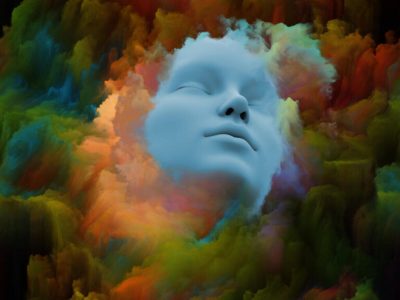The hopelessness that comes with depression can make living with eating disorders quite challenging. However, when you lessen the depressive symptoms you struggle with, you’re much more likely to start experiencing success. Not only will you overcome the depression, but also the eating disorder. A growing majority of people find flaws with their bodies, scrutinizing every detail.
Given the continued societal pressures to achieve this “thin ideal”, feelings of inadequacy about people’s bodies arise. They feel depressed, often leading them to take extreme measures to improve their body image. A negative body image and low self-esteem are two potential factors in developing an eating disorder. Nevertheless, symptoms of depression can put someone at risk.
According to research, 32-39 percent of those with anorexia nervosa also suffer from major depressive disorder. 36-50 percent of those with bulimia nervosa and 33 percent of people who suffer from binge eating disorder also have depression.
With the introduction of the COVID-19 pandemic into daily life, the past months brought additional risk factors for developing depression and other disorders. Social isolation led to increased loneliness, while creating a shift in daily routine. It additionally fractured support systems, which can be a primary source of comfort.
For those suffering from an eating disorder, these changes resulted in countless hours ruminating on food and body image. This usually leads a person to have negative thoughts and behaviors. Recent research also indicates an increase in symptoms of depression and anxiety, correlating with increased eating disorder behaviors.
What’s depression?
Before we can understand the connection between depression and eating disorders, it’s important to learn about depression. While we all feel sad, moody, or low from time to time, some people experience these feelings intensely. They do it for long periods of time, weeks, months, or years, and sometimes without any apparent reason. Depression is more than just a low mood.
It’s a serious condition that has an impact on both physical and mental health. Depression affects how a person feels about themselves. People may lose interest in work, hobbies, and doing things they normally enjoy. Others may lack energy, have difficulty sleeping, or sleep more than usual. Some people feel anxious or irritable and find it hard to concentrate. Check out these common symptoms of depression:
- Feelings of helplessness, guilt, or worthlessness.
- Anxiety.
- Feelings of intense sadness.
- Overeating or under-eating.
- Irritability or anger.
- Trouble sleeping.
- Difficulty concentrating.
- Feelings of suicide ideation.
Those who suffer from depression may exhibit a suppressed appetite, trouble sleeping, or loss of interest in previously enjoyed activities. Sufferers also exhibit difficulty concentrating and lack of energy. Additionally, the risk of suicide is higher for those who suffer from both anorexia and depression according to a study by the Diagnostic and Statistical Manual of Mental Disorders.
Connecting eating disorders and depression
Many people who suffer from a mental disorder also struggle with co-occurring depression. A study reports that up to 50 percent of people seeking treatment for anorexia nervosa suffer from co-occurring depression. This study was conducted by the National Association of Anorexia Nervosa and Associated Disorders (ANAD). Over 50 percent of people who seek treatment for bulimia nervosa or binge-eating disorder live with co-occurring depression.
The relationship between depression and eating disorders is complex because depression can make a person struggle with unhealthy eating patterns, while the disorders can lead to feelings of depression. For women who developed a disorder that co-occurs with depression, these overlapping symptoms can lead to a destructive cycle. It involves disordered eating and feelings of hopelessness that can make recovery that much harder.
What are eating disorders?
Eating disorders involve an unhealthy preoccupation with eating, exercise, and body weight or shape. Distorted thoughts and emotions about body image and self-worth can lead to marked changes in eating and exercise behaviors. These may include excessive dieting, fasting, overexercising, vomiting, binge eating, or taking medications such as weight loss pills, diuretics, enemas. and laxatives.
An unhealthy relationship with food is an attempt to deal with emotional issues, including negative feelings and low self-esteem.
Mental disorders are common and increasingly prevalent. In the United States, one in four people knows someone who experienced an eating disorder. About two to three in every 100 American females has anorexia or bulimia nervosa. Around four in 100 Americans have symptoms of binge eating disorder. It isn’t uncommon for a person to progress from one mental disorder to another. Furthermore, mental disorders can affect people from any age group, gender, or socioeconomic and cultural background.
Types of eating disorders
Anorexia nervosa
Unfortunately, people with anorexia nervosa consider themselves overweight, even though they’re dangerously thin. The process of eating is obsessive. Unusual eating habits develop, including avoiding food and meals or carefully weighing and portioning food. Another habit is picking out a few foods, eating them in small quantities. Sufferers repeatedly check their body weight, engaging in techniques to control their weight.
For instance, compulsive exercise. Many people with anorexia have psychiatric and physical illnesses. These include depression, anxiety, obsessive behavior, substance abuse, neurological complications, and impaired physical development.
Bulimia nervosa
Bulimia nervosa is characterized by recurrent and frequent episodes of eating large amounts of food. Sufferers feel a lack of control and over-eat. This binge-eating follows purging (vomiting, use of laxatives or diuretics), fasting, or excessive exercise. The weight of people with bulimia falls within the normal or healthy weight range but, like those with anorexia, they fear gaining weight.
Thus, they wish to lose weight and feel intensely dissatisfied with their bodies. Like those with anorexia, people with bulimia have coexisting psychological illnesses like depression, anxiety, or substance abuse. Many physical conditions also result from their behavior, including electrolyte imbalances and gastrointestinal problems.
Binge eating disorder
Binge eating disorder is the most common disorder, especially in America. It typically begins during adolescence and early adulthood, although it can develop later on. People with this disorder have symptoms similar to those of bulimia or the binge eating subtype of anorexia. For example, they eat unusually large amounts of food in relatively short periods of time.
They feel a lack of control during binges. Sufferers don’t restrict calories or use purging behaviors, including vomiting to compensate for their binges. Obese people with the disorder have psychological disorders, like personality disorders. Obesity is associated with cardiovascular disease and hypertension.
The benefits of treating depressive symptoms
Research shows that, when people suffer from a disorder that occurs with depression, aiding them to decrease their depressive symptoms helps. In other words, it can positively affect their eating disorder recovery. Researchers conducted a study on 31 women ages 19-50 who had bulimia nervosa and co-occurring depression and found that many of the women’s bulimic symptoms began to improve.
This happened only when their care team helped them reduce their depressive symptoms via therapy. As a part of the study, the women took part in 16 weeks of interpersonal psychotherapy. It was aimed at helping them process the scary feelings and stress they experienced. The therapy also relieves the hopelessness and worthlessness associated with depression.
According to the research, when a woman’s depressive symptoms started to decrease, so did her disorder symptoms. By the end of treatment, 77 percent of the participants saw improvement in their bulimic symptoms. 34 percent of the participants saw improvement in their symptoms for both conditions. Surely, the connection between eating disorders and co-occurring depression is complex.
For some women, there are numerous benefits to focusing on depressive symptoms in the initial stages of treatment. Are you considering finding a treatment for your mental disorder? It’s essential that you complete a detailed assessment that identifies every condition you may be facing. This ensures you get the comprehensive treatment you need.
Treatment options for depression and eating disorders
There are many different treatment options for people who live with both an eating disorder and coexisting depression. Every person has different life experiences that affect the way these conditions impact them. Hence, it’s essential to find the type and level of treatment that best fits your needs. Various levels of care can help you start the recovery process. It all depends on the nature and severity of your symptoms. Some of them include:
- Medication. Your therapist or doctor may prescribe you depression medications, which can sometimes help both conditions at once. For instance, mood stabilizers, antidepressants, and anticonvulsants.
- Cognitive-behavioral therapy (CBT). A well-established, highly effective, and lasting treatment is cognitive-behavioral therapy. It focuses on identifying, understanding, and changing thinking and behavior patterns. Benefits are usually seen in 12 to 16 weeks, depending on the patient.
- Residential treatment. This level of care involves staying at a treatment facility overnight, usually for about 28–30 days. It all depends on your own needs and progress, so you can receive around-the-clock support. The support will help you manage the overwhelming emotions and compulsions associated with depression and disorders.
Other treatment options
- Partial hospitalization program (PHP). Also known as day treatment, a PHP allows you to take part in therapy. It lasts for several hours a day, multiple days a week. You don’t stay overnight. However, this level of care offers more structured support than you’d receive in traditional outpatient therapy.
- Traditional outpatient therapy (TOT). Some facilities may also provide intensive outpatient programs (IOPs) and TOT. These can be incredibly beneficial if you don’t need as much structure throughout the treatment process.
- Individual therapy. Meeting one-on-one with a therapist allows you to discuss your recovery progress. You can also discuss any barriers you encountered during treatment and your short- and long-term treatment goals.
- Group therapy. Group sessions offer a chance for you to hear the diverse perspectives of other participants, growing your support system. Many people who participate in group therapy also report feeling less alone in their recovery. They also learn to build healthier relationships in these sessions.
In short, it’s important to recognize just how individual the healing process is. If you struggle with multiple eating disorders and illnesses, reach out for professional help. Only an expert can successfully provide solutions. You’ll be assessed to determine the right type and level of care for you.
“The best cure for worry, depression, melancholy, and brooding is to go deliberately forth. Next, try to lift with one’s sympathy the gloom of somebody else.”
–Arnold Bennett-
Listen to What Your Grandmother Says
The post Eating Disorders and Depression – Understanding the Connection appeared first on Exploring your mind.


















Comments